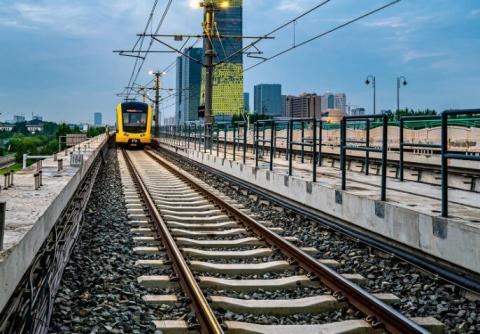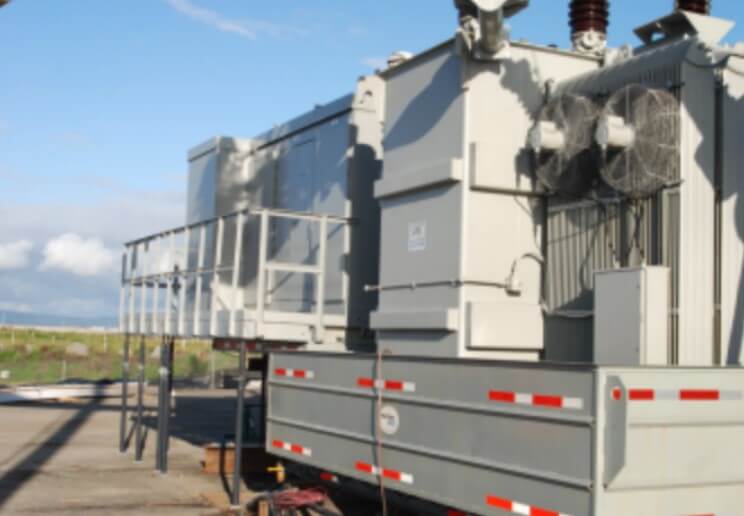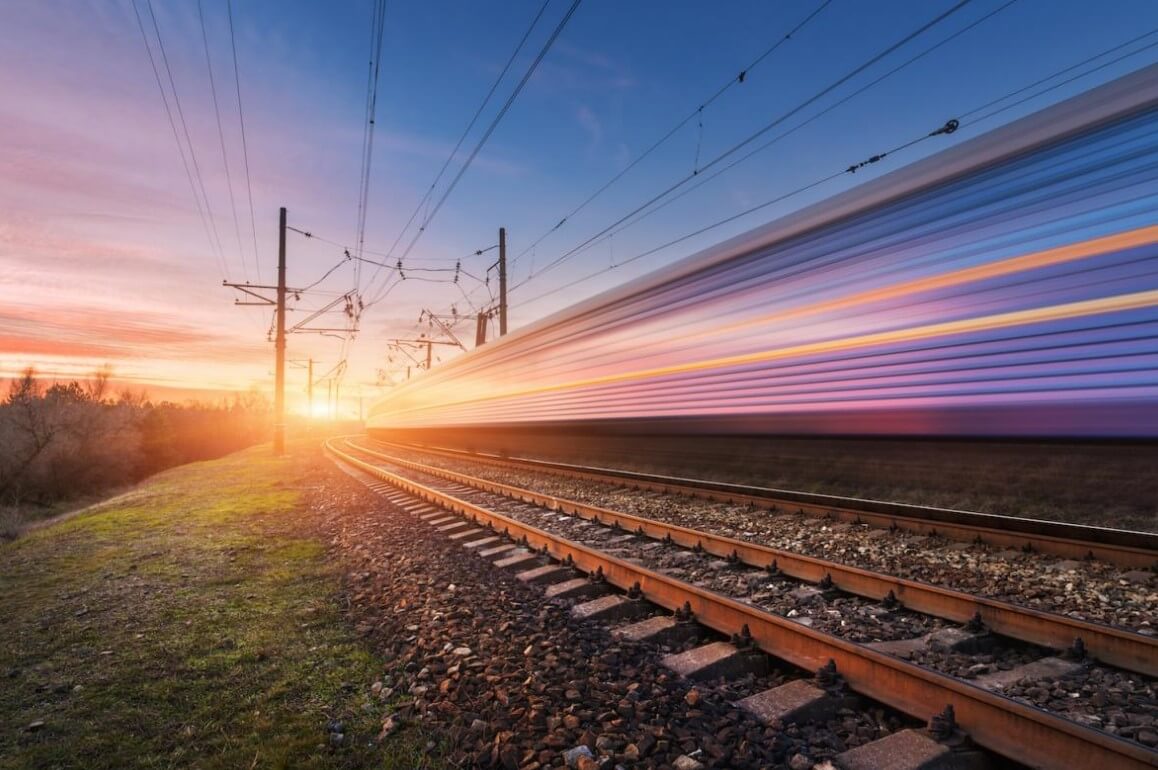
Railways have been at the heart of industrial and economic growth for centuries, evolving from steam-powered locomotives to today’s highly efficient, electrified systems. A central element in this transformation has been the ability to generate, distribute, and control power effectively. One of the most important aspects of modern railway infrastructure is transmitting electricity at high voltages to ensure safe, reliable, and efficient train operations.
At Swartz Engineering, we specialize in designing power solutions that address the challenges of railway electrification. In this article, we’ll explore why high-voltage transmission is necessary, how it is achieved, and the technologies that make it possible.
Why High-Voltage Transmission Matters in Railways
Railways require large amounts of energy to power locomotives, lighting, communication systems, and signaling equipment. If electricity were transmitted at low voltage, the current would be extremely high, leading to greater losses due to resistance in conductors. High currents also require thicker cables, driving up costs and adding weight to infrastructure.
By transmitting electricity at higher voltages, the current can be reduced significantly while delivering the same amount of power. This minimizes resistive losses, lowers operational costs, and allows energy to travel longer distances with efficiency. For railway operators, this translates into reduced maintenance needs, improved reliability, and consistent power supply across vast networks.
Historical Perspective: From Steam to Electric
Electrification of railways began in the late 19th and early 20th centuries. Early systems used relatively low voltages because technology was limited, and distances between substations were short. However, as railway networks expanded and trains required more power, higher voltages became necessary.
Today, electrified railway systems often operate at voltages ranging from 15 kV AC to 25 kV AC for overhead catenary systems, while some high-speed railways and heavy freight lines push beyond these levels. Swartz Engineering contributes to this evolution by developing safe and efficient solutions that help manage these demanding voltage levels.
The Science Behind High-Voltage Transmission
Electric power is defined by the formula:
Power (P) = Voltage (V) × Current (I)
For a given power demand, increasing voltage allows current to decrease. Lower current means lower energy loss, since resistive losses are proportional to the square of the current (I²R). This principle is the backbone of high-voltage transmission, not only in railways but across global power grids.
For railway systems, the benefits include:
- Energy Efficiency: Reduced losses make electricity transmission more cost-effective.
- Long-Distance Coverage: High voltages ensure reliable power delivery across regional or even international railway lines.
- Smaller Conductors: Reduced current allows lighter, more affordable infrastructure.
- Scalability: Systems can accommodate growing demand without major redesign.

GET IN TOUCH
The ultimate solution for reliable power control! call us at 276-285-3841
Methods of Transmitting Electricity in Railways
Different countries adopt varying standards for railway electrification, but the two primary methods of transmitting electricity are:
- Overhead Line Equipment (OLE)
Overhead wires, also called catenary systems, supply electricity to locomotives through pantographs mounted on train roofs. These systems typically use alternating current (AC) at 25 kV for high-speed lines, though some networks use 15 kV AC or 3 kV DC.
- Third Rail Systems
In urban transit systems and some older railways, electricity is supplied via a conductor rail located alongside the track. Voltages are usually lower, around 600–750 V DC, making them more suitable for metro or suburban services rather than long-distance rail.
Swartz Engineering helps design and optimize both approaches, focusing on safe switching systems, transformers, and monitoring devices to keep power transmission stable and efficient.
High-Voltage Challenges in the Railway Industry
While transmitting electricity at high voltages is beneficial, it comes with challenges that require specialized engineering:
- Insulation Requirements: High voltages demand superior insulation to prevent arcing and ensure safety.
- Switching and Protection: Circuit breakers, relays, and protective devices must be highly reliable to prevent faults from disrupting entire networks.
- Electromagnetic Interference (EMI): High voltages and currents can interfere with signaling and communication systems.
- Maintenance: Overhead lines and substations require continuous monitoring and maintenance to prevent outages.
Swartz Engineering addresses these issues with innovative equipment that improves resilience, minimizes downtime, and ensures compliance with international safety standards.
Future Trends: Smarter Power Transmission
The railway industry is now embracing smart technologies to optimize electricity transmission further. Future trends include:
- Digital Monitoring Systems: Sensors and IoT devices track voltage, current, and equipment health in real time.
- Energy Storage Integration: Batteries and supercapacitors are being tested to smooth out power fluctuations.
- Renewable Energy: Solar and wind power sources are increasingly integrated into railway power systems, requiring advanced grid compatibility.
- Automation and AI: Predictive maintenance powered by AI reduces failures and enhances reliability.
Swartz Engineering is at the forefront of integrating these technologies, providing railway operators with smarter, greener solutions.
Environmental Benefits of Electrified Railways
One of the major global priorities is reducing greenhouse gas emissions. Electrified railways, supported by high-voltage transmission, play a critical role in this mission. Compared to diesel-powered trains, electric trains produce fewer emissions, run more quietly, and offer better energy efficiency.
When paired with renewable energy sources, transmitting electricity at high voltages makes railways one of the cleanest modes of mass transport available today. This aligns with Swartz Engineering’s commitment to sustainable infrastructure and innovation.

GET IN TOUCH
The ultimate solution for reliable power control! call us at 276-285-3841
Swartz Engineering’s Role in Railway Electrification
For decades, Swartz Engineering has been delivering solutions that empower the railway industry to meet its electrification goals. Our expertise lies in developing:
- High-voltage relays and protective devices
- Custom transformers and substations
- Advanced monitoring and control systems
- Safety-focused innovations for both overhead and third rail systems
Our commitment is to ensure that every railway system we support can transmit electricity safely, efficiently, and sustainably.
Conclusion
The success of modern railways depends on the efficiency of their power systems. By transmitting electricity at high voltages, railways achieve the reliability, speed, and sustainability needed to meet global transportation demands. While challenges exist, advanced engineering solutions from companies like Swartz Engineering ensure that railway operators can deliver safe, clean, and efficient travel experiences for millions of passengers worldwide.
As railways continue to expand and adopt new technologies, the role of high-voltage transmission will only grow more vital. With the right infrastructure, innovation, and expertise, the future of railway electrification looks brighter than ever.
Products We Offer
Swartz Engineering strives to provide top-quality products to achieve our customer's needs. Our products include:
- Type 76 DC Relay
- Type 82 DC Relay
- Swartz Engineering’s Type 64 Ground Relay
- Type 32 Reverse Current Relay
- Type 150 DC
- CSM Shield Monitor
- Metal Oxide Surge Arrestors
- Transducers
- MVIS SL Slim-line Contactor
- Fully-tested Power Control Rooms
- Swartz Engineering’s Portable Substations
For nearly half a century, we have proudly led the industry in ensuring safety and efficiency. Swartz Engineering is a trusted family-owned company dedicated to providing top-notch power distribution solutions for the electrical industry. Contact us today.
